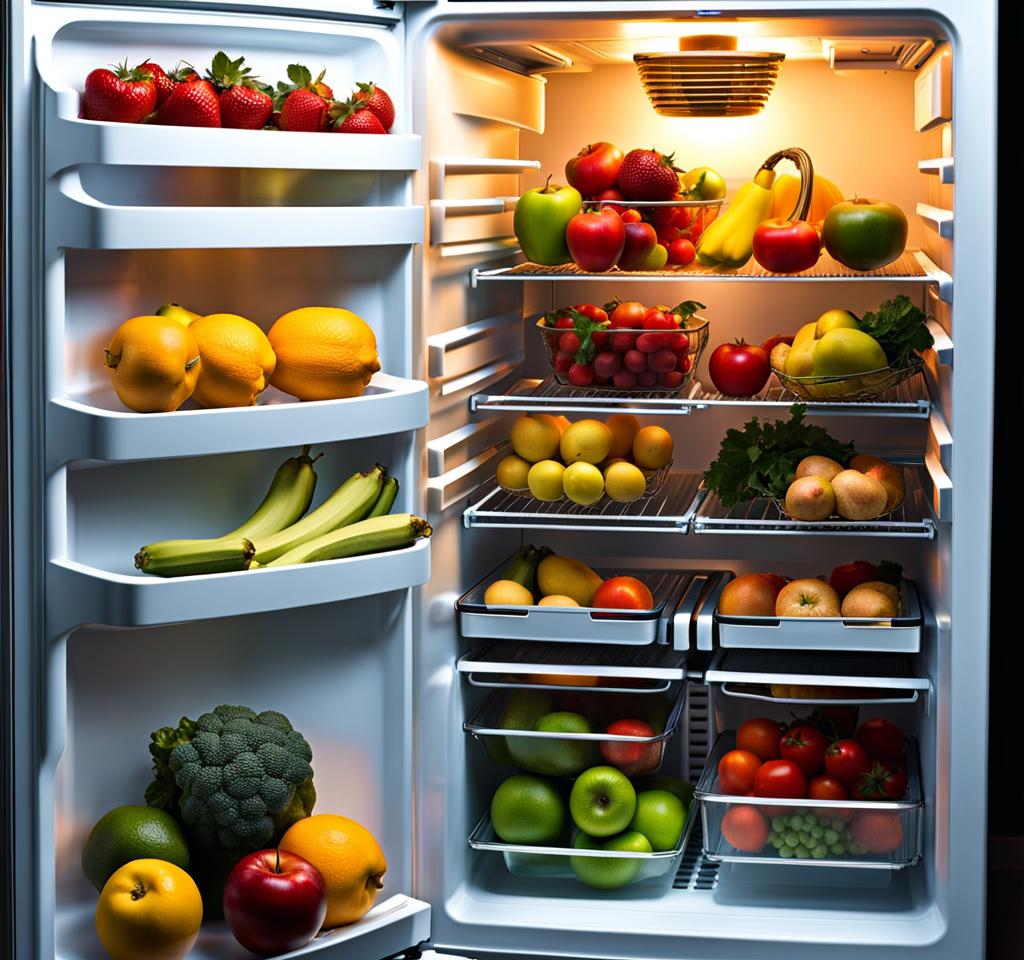We’ve all been there – you open the fridge, hoping to grab a refreshing beverage or a crisp salad, only to find that everything inside is frozen solid. It’s frustrating when your trusty refrigerator decides to go into overdrive, turning your fresh produce into my fridge is freezing everything mode. Don’t panic, though! With a few simple troubleshooting steps, you can get your fridge back on track and prevent this chilly situation from happening again.
Why is My Fridge Freezing Everything? Identifying the Root Causes
Before we dive into the solutions, it’s essential to understand what might be causing your fridge to freeze everything in sight. Several factors could be at play here:
- Thermostat issues : If your fridge’s thermostat is set too low or malfunctioning, it can cause the temperature to drop excessively, leading to freezing conditions.
- Airflow blockage : Blocked vents or condenser coils can restrict airflow, preventing proper cooling and causing the fridge to overcompensate by freezing everything.
- Faulty defrost system : A defective defrost system can fail to prevent ice buildup, leading to a vicious cycle of freezing and thawing that ultimately turns your fridge into an icebox.
- Refrigerant leaks : If your fridge is low on refrigerant, it can struggle to maintain the proper temperature, causing the freezer compartment to work overtime and freeze the entire appliance.
- Door sealing problems : Gaps or damage to the door gaskets can allow warm air to seep in, causing the fridge to work harder and potentially freeze everything inside.
Quick Fridge Temperature Troubleshooting Tips
Now that we’ve identified some potential culprits, let’s dive into some quick fixes that could restore your fridge’s cooling capabilities:
- Check thermostat settings and adjust if needed : Start by locating your fridge’s thermostat and ensuring it’s set to the recommended temperature range (typically between 35degF and 40degF). If it’s set too low, adjust it gradually until the freezing issue resolves.
- Ensure proper airflow by clearing vents and coils : Grab a vacuum cleaner or a brush and carefully clean out any dust or debris that might be blocking the vents or condenser coils. This will allow for better airflow and more efficient cooling.
- Manually defrost the freezer compartment : If ice buildup is the issue, you might need to manually defrost the freezer section. Unplug the fridge, remove any food items, and let the ice melt completely before plugging it back in and starting fresh.
- Inspect door gaskets for damage or gaps : Check the door seals for any cracks, gaps, or signs of wear and tear. If the gaskets are compromised, they’ll need to be replaced to prevent warm air from seeping in and causing freezing issues.
- Listen for strange noises indicating compressor issues : If you hear unusual noises coming from your fridge, it could be a sign of a failing compressor, which is responsible for regulating the temperature. In this case, it’s best to call a professional for further assessment and repairs.
Long-Term Solutions for an Overly Cold Fridge
If the quick fixes above don’t resolve the freezing issue, or if the problem keeps recurring, you might need to explore more long-term solutions:
- Replacing the thermostat or temperature control board : A faulty thermostat or control board could be causing your fridge to read the wrong temperature, leading to excessive freezing. Replacing these components can help restore proper temperature regulation.
- Servicing the defrost system and heating elements : If your fridge’s defrost system is malfunctioning, it might be time to have it serviced or replaced. Faulty heating elements could also be contributing to the freezing problem.
- Recharging or repairing refrigerant leaks : If your fridge is low on refrigerant, it might need to be recharged or have the leaks repaired to restore its cooling efficiency and prevent freezing issues.
- Upgrading door gaskets for better insulation : If your door seals are worn out or damaged beyond repair, replacing them with high-quality gaskets can help prevent warm air from entering and causing temperature fluctuations.
- Considering a fridge replacement if repairs are costly : In some cases, particularly with older models, the cost of repairs might outweigh the value of the fridge itself. If that’s the case, it might be time to start shopping for a new, energy-efficient model.
Preventing Freezing Issues with Proper Fridge Maintenance
While troubleshooting and repairs can resolve immediate freezing problems, it’s also essential to practice proper fridge maintenance to prevent future issues. Here are some tips to keep your refrigerator running smoothly:

- Cleaning condenser coils regularly : Dust and debris buildup on the condenser coils can impede airflow and cause your fridge to work harder, potentially leading to freezing issues. Make it a habit to clean the coils at least once a year.
- Checking door seals and hinges periodically : Inspect the door gaskets and hinges every few months to ensure they’re in good condition and sealing properly. Replacing worn-out seals can help maintain consistent temperatures and prevent warm air from entering.
- Monitoring for strange noises or performance changes : Pay attention to any unusual noises or changes in your fridge’s performance. These could be early warning signs of potential issues that need to be addressed before they escalate.
- Keeping the fridge level and away from heat sources : Ensure your fridge is level and positioned away from direct sunlight or other heat sources, which can cause it to work harder and potentially lead to freezing problems.

This is where you’ll find inspiration to create a stylish and beautiful dream home.